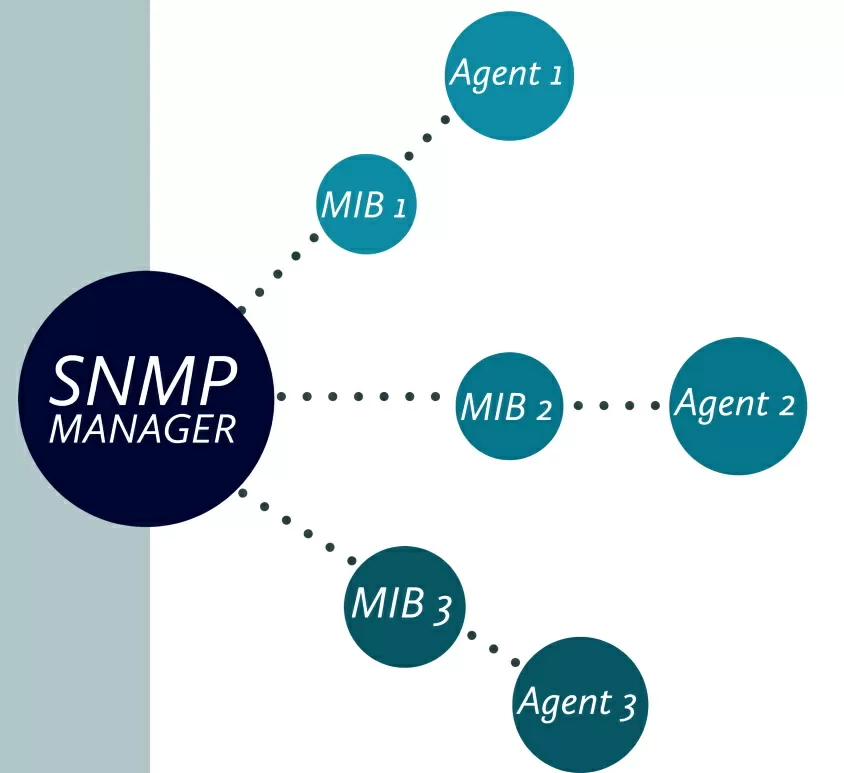Download our free SNMP White Paper. Featuring SNMP Expert Marshall DenHartog.
This guidebook has been created to give you the information you need to successfully implement SNMP-based alarm monitoring in your network.
1-800-693-0351
Have a specific question? Ask our team of expert engineers and get a specific answer!
Sign up for the next DPS Factory Training!

Whether you're new to our equipment or you've used it for years, DPS factory training is the best way to get more from your monitoring.
Reserve Your Seat TodayIn this article, you'll learn what MIBs are and you'll have a quick SNMP guide.
Management Information Base, or MIB, is a formatted text file that lists the data objects used by a particular piece of SNMP equipment.
When you buy a device that uses SNMP (for example, a managed switch), you'll tell it to send messages to your central SNMP manager. But there are tens of thousands of different SNMP devices and your manager doesn't natively understand each one.
The manufacturer of your managed device will supply you with a file (usually a download from their website) that you'll load ("compile") into your SNMP manager (If you've ever installed a device driver on a PC, you understand this concept). Without the management information base for message translation, communication simply won't happen.

A MIB contains definitions and info about the properties of managed resources and the services that the agents (devices) support. The features of resources, as defined in a Management Information Base, are called "managed objects" or "management variables".
A management station gets and sets objects in the Management Information Base, and an agent notifies the management station of events using messages called (somewhat oddly) "traps". All message exchanges between the management station and its agents take place using SNMP. The Management Information Base at the management station contains network management info. This info is taken from the MIBs of all the managed parts in the network.
Your SNMP manager needs the MIB in order to process messages from your devices. This is a critical step in network monitoring. The Management Information Base is also your best guide to the real capabilities of an SNMP device. You need to be able to read the MIB so that you can have a good idea of what assets you do have.
One of the best tactics for addressing MIB problems is to simply read through the file. As the file is just ASCII text, you can view it in any word processor or text editor (even Notepad). Some manufacturers provide grouped files in binary format, but those aren't readable. You want the raw ASCII version of the Management Information Base file.
An easier way to get started with Management Information Bases can be to use MIB browsers. These are software programs that allow you to view it in a more friendly format, commonly a tree containing each MIB object.
Do you need to download DPS' MIBs, Cisco MIBs, or even Chronos MIBs? We have an extensive library with a list of MIBs supported by different vendors. There, you can download these files for free.
The Simple Network Management Protocol, or SNMP, is a standard protocol, developed by The Internet Engineering Task Force (IETF).
SNMP is used for monitoring and management of network devices that span firewalls or embedded devices (known as SNMP agents).
SNMP exposes management data in the form of variables on the managed systems. These describe the system configuration. These variables can then be sorted (and sometimes set) by managing applications.
There are several SNMP versions, but the most common by far are SNMP v1, v2c, and v3.
The SNMP v1 network management architecture contains:
SNMP v2c specs include the following new capabilities:
SNMP v3 specs include the encryption required by security-conscious organizations. Most networks have large amounts of SNMP gear already, though, and must find another way to deploy v3 for security?
With an SNMPv3 mediator, it's possible to upgrade older SNMP-enabled devices to SNMPv3. It's pretty simple equipment in concept, but only offered by a few manufacturers.
Download White Paper: "How to Read and Understand the SNMP MIB"
Part 2: Tactics for resolving common MIB problems
Part 3: Why is the MIB important?